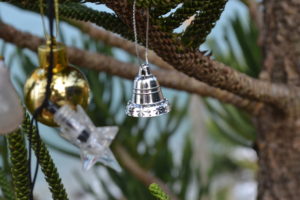 When you get to the final booking stage, and if you want the cheapest deal, it is important to have your dates selected for travel. And that selection process will not only also affect the cost of the tickets, but could also affect your enjoyment of each destination. There’s nothing worse than going to a particular spot to see something specific only to arrive and discover it’s closed for rainy season. So to keep tickets cheap, but also to get the most out of your time in each place, you’ll want to select dates bearing certain things in mind.
When you get to the final booking stage, and if you want the cheapest deal, it is important to have your dates selected for travel. And that selection process will not only also affect the cost of the tickets, but could also affect your enjoyment of each destination. There’s nothing worse than going to a particular spot to see something specific only to arrive and discover it’s closed for rainy season. So to keep tickets cheap, but also to get the most out of your time in each place, you’ll want to select dates bearing certain things in mind.
Do your Research
When you chose your destinations you probably put some thought into the things you wanted to see and do there. Keep these things in the back of your head and if you wanted to be in any of these places at a particular time of year to hit a particular holiday, season or event, make a note of it. Don’t stop your research with the fun stuff though. Have a look at weather patterns and local holidays in each of your destinations and find out what seasons you might want to avoid. In some places, tours only run during high season. In others, it’s impossible to move for all the people over a national holiday.
Weather Seasons
If you’re travelling for a year, you will not be able to avoid bad weather entirely. It happens. But you can try to minimise your chances of encountering it by researching the weather patterns in your destinations and making sure you know when monsoon or rainy season hits in tropical climates, or when the deep cold of winter might set in.
If you don’t mind the weather though, it can save you a lot of money if you embrace rainy season or the equivalent in your destination of choice. The best weather will usually also coincide with high season and therefore high prices. Travelling to Canada in the middle of February could be insanely cold. But if you bundle up, you can not only still sightsee, but the beautiful winter landscapes might just be the best way to see it, and you can enjoy the ski season to boot.
Travel Seasons
As mentioned above, the best weather often coincides with travel high seasons, which are the times of year that airlines and hotels hike up prices because many people may have time off work and want to travel to visit friends or family or just to get away and take their beach holiday for the year. Not only flights will be most expensive at this time of year and will have more limited availability, but so will hotels and tours. At the end of the day, travel is affected by the principles of supply and demand so if you’re travelling when everyone else is travelling, things will be more expensive. Generally high season will be mid-December to mid-January and June through August, though it is always important to check out what local holidays might also affect travel availability and cost. That being said, low season, usually mid-January to March and November to mid-December, often the cheapest times to travel, might coincide with the worst weather or tours simply not running, so again, it is important to do your research and have an idea if there’s something you really want to do at each destination. Shoulder season fits into the areas in between in April and May and September and October and will offer a middle ground on prices and also often on weather and availability.
Bear in mind that on a long trip, or if you have specific things you want to see and do, it will be difficult to avoid travelling at these times completely. If you will be travelling high season, it is best to book tickets around 6 months prior to the date of travel to minimize the costs. If you will be in an area for a while during high season, you might be able to book your flights in and out of the region on either side of high season, so at least the cost of flights might be a little lower, while still being in the area when you want.


